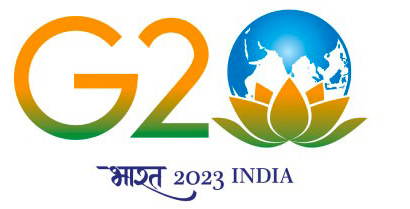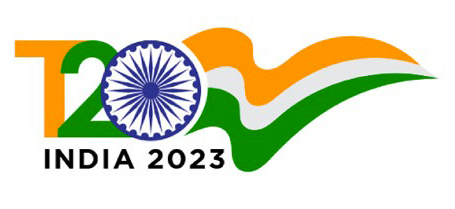Among Multilateral Development Banks (MDBs) pressure to make more finance available to emerging and developing economies (EDEs) for meeting development needs, mitigating climate risks and insulating from shocks is largely on the World Bank (WB) system. But there are MDBs located in different regions that also need to deliver. They are MDBs since shareholders are from more than one country.
Even if there is a regional focus, the region includes many countries. Any diversity in shareholders reduces risk and improves rating, lowering the cost of borrowing. For example, New Development Bank (NDB) has a higher rating than any of its shareholders. It is true the WB group dominates in size, accounting for more than 50 per cent of the lending.
Better global safety nets
For the MDB system to do more, however, all MDBs have to increase lending. For this capital has to increase as well as be better leveraged. A contestable system that delivers based on country plans could be much more effective. At present both competition and coordination among MDBs is too little. Customer friendliness and ease of borrowing is lacking.
Where the major shareholders are the same, regional MDBs have little independence and policies are similar. But some MDBs are doing things differently. For example, NDB relies on local government approvals, technology and a thin staff to reduce project approval time to 6 months compared to the 2-4 years the WB takes. Some are trying local currency borrowing, which removes currency risk for local projects. Some are using shareholder SDRs to leverage capital.
Small well defined improvements such as board monitoring of new targets, changing procedures, easing the utilization process, improving managerial incentives for small ticket lending and training for giving warranties can be pushed through in the short run.
Over time, MDBs could harmonise operational processes with standardised call for proposals using country legal frameworks where these are sufficiently developed. For example, Asian Development Bank uses UK law which increases the compliance burden for its clients. Minimum standards must be developed, but local standards used where possible.
Countries need to create bankable projects, which compete for finance on the country platforms. Tech support can help build granular asset specifics, measurement, disclosure and appropriate incentives. Transparency and competition would reduce the impact of geopolitics in project decisions.
Capital requirements
A major issue being currently debated is increasing MDB capital versus using it more effectively to deliver. The MDBs naturally want more capital and their argument is it is essential to preserve the AAA rating that lowers their cost of capital.
But MDBs’ preferred creditor status (PCS) is a major reason for their high credit quality. This point is not well understood. Borrowers themselves prefer to repay MDBs since it keeps loan rates low and other loans are priced off multilateral loans. They are not asked to take haircuts on their loans. Indeed China was arguing that MDBs should take haircuts as a pre-condition for it to take haircuts on its bilateral loans to restructure debt.
But China dominated MDBs also do not take haircuts. Apart from capital other factors such as PCS support AAA ratings. MDB diversity also reduces risk and improves rating. The large callable capital that MDBs have should further support MDBs’ rating. G20 should bring these issues to the attention of credit rating agencies.
But issues of MDB governance and country voting shares are also making it difficult to increase capital. A green concessional lending arm for the WB, with more equitable voting shares, may find it easier to raise capital.
Bringing in private capital
Various types of innovations have made the most progress in tackling climate change and have the most potential to deliver. Reaching net zero creates attractive business prospects for the private sector and since government finances are stretched bringing in private money is the way to reach the required scale quickly. But private money is reluctant to bear the unknown risks of new initiatives and demands excessive country risk premia especially in EDEs. MDBs can play a crucial role in mitigating risks thereby attracting private sector investments.
Blended finance, involving co-financing from MDBs, philanthropies and governments, or blended investment by two or more parties, reduces risk thus protecting investors’ returns and lowering the cost of capital for EDEs. Risks have to be carefully allocated in order to prevent perverse incentives or excess subsidisation of the private sector. But PPP financial structures, such as first loss funds, are designed to limit the risk exposure of the investor or promoter of a project. There are already funds that co-invest in syndicated multilateral private-sector loans to provide medium- and long-term finance to EDE projects and companies.
Hedging can reduce costs due to currency risk but tends not to be available for the long horizons required for infrastructure. It is expensive and operationally difficult. Some funds use pooling and diversification to provide synthetic hedges.
Diversification reduces risks and protects returns. The cost of currency risk can be substantially below the cost of hedging for portfolios that are diversified across regions and sectors and identify and reduce exposure to problematic currencies, since country risk normally exceeds actual currency depreciation. The IMF by making its currency database can help in the design of such structures at low cost.
Role of Domestic Institutions
Local Development Finance Institutions (DFIs) with good governance and ratings can be used to provide local information and monitor projects. Delegation and co-financing with such intermediaries can build on financial innovation and enhanced data availability to facilitate decentralized decision-making processes. MDBs warranties mediated through regional and national DFIs can multiply reach while reducing risk.
Technology can enable a two-way flow of information using similar standards where it matters and still accepting differences in line with each country’s priorities. New kinds of local information being generated and can be leveraged through strategic sharing and data-standards can make it available.
For example, Internet of Things based measures of carbon saving in infrastructure projects can save costs. India setting up of a new DFI is timely.
Shareholders drive MDBs through their Boards. Shareholder countries are members of G20. If G20 reaches agreement so that the Board supports the changes they will happen. Since governments finances are strained, making MDBs deliver more with less is an acceptable idea. But more capital must also be found for essential public goods.
The author is chair of India’s T20 task force on repurposing the global financial architecture.
This commentary originally appeared in The Hindu Business Line.




